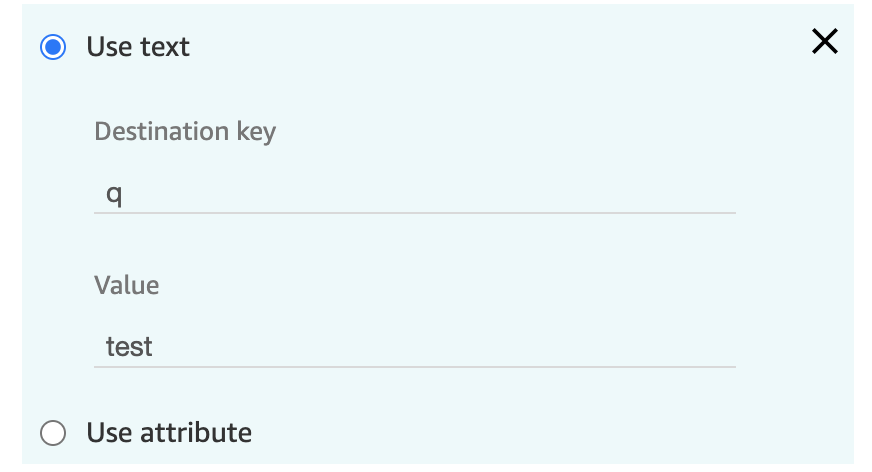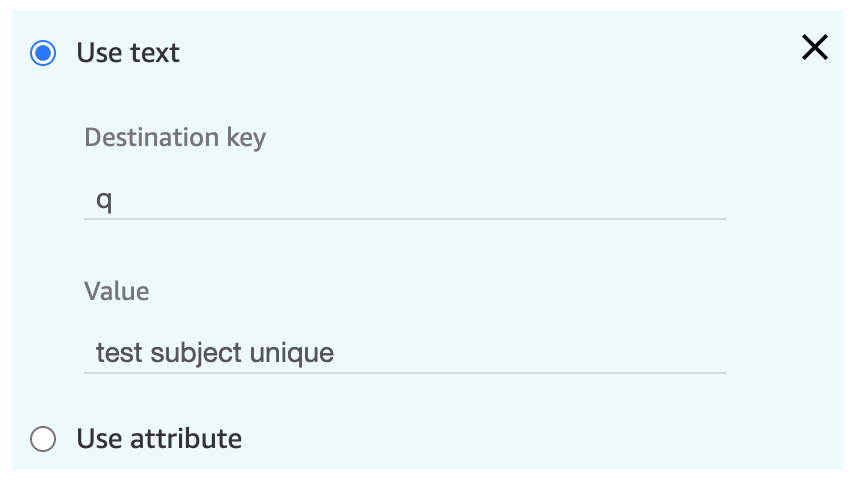Accessing the Salesforce API from Amazon Connect Contact Flows Using AWS Lambda
The most commonly used feature of the AWS Serverless Application Repository for Salesforce is accessing/updating Salesforce data using the sfInvokeAPI Lambda function. This function allows an Amazon Connect contact flow to perform the following operations against your Salesforce org:
Lookup: queries Salesforce for objects based on the parameters passed to it
Create: creates a Salesforce object based on the parameters passed to it
Update: updates a Salesforce object based on the parameters passed to it
Phone Lookup: uses Salesforce Object Search Language (SOSL) to construct text-based search queries against the search index, which gives significant performance improvement when searching phone number fields.
Delete: deletes a Salesforce object based on the parameters passed to it
Query: executes a Salesforce Object Query Language (SOQL) query on the Salesforce instance. Can return multiple entries.
QueryOne: executes a Salesforce Object Query Language (SOQL) query on the Salesforce instance. Returns result only when one entry is returned from the query.
CreateChatterPost: creates a chatter post.
CreateChatterComment: creates a chatter comment.
Search: performs a search against the Salesforce instance, returning all results.
SearchOne: performs a search against the Salesforce instance, returning at most one result.
NOTE: naming of the Lambda function will vary based on template data, but sfInvokeAPI will always be a part of the name.
When you invoke this Lambda function from your contact flows, you will need to pass along parameters that inform the function as to which Salesforce operation you wish to execute, as well as pass along any required parameters. Depedning on your use case, this can require reference to the Salesforce REST API or the Salesforce Connect REST API documentation. The core parameters are:
sf_operation: specifies with operation to run. Options are lookup, create, update, phoneLookup, query, queryOne, createChatterPost, createChatterComment
sf_object: defines what type of object you are referencing. Examples include Case, Contact, Task, etc.
sf_fields: the fields you want to receive back from Salesforce when an operation completes successfully
sf_id: the unique identifier for a Salesforce object. Typically used in update operations
sf_phone: contains the phone number used to search when performing a phone lookup
Salesforce Lookup
This operation is invoked by setting sf_operation to lookup. In this case, the Lambda function queries Salesforce for objects based on the parameters passed to it. For lookup, the following parameters are required:
sf_object
sf_fields
Any additional parameters passed will be evaluated as conditional arguments for the lookup.
Note that this operation only returns the first item of the query results. If you want to have all results returned from Salesforce, set sf_operation to lookup_all.
In the contact flow example below, we are looking for a specific case based on customer input.

This operation returns a response of:
{
"Id": "5006g00000AaIs7AAF",
"sf_count": 1
}
For lookup_all the operation returns a response of:
{
"sf_records_0_Id": "5006g00000AaIs7AAF",
"sf_records_1_Id": "5006g00000AaIs7AAE",
"sf_count": 2
}
Note that sf_count is the count of records matched and not the count of fields in the response. This means all fields that start with sf_records_i_ count as one record. If the query above returned the Name as well as the Id the response will be:
{
"sf_records_0_Id": "5006g00000AaIs7AAF",
"sf_records_0_Name": "Name0",
"sf_records_1_Id": "5006g00000AaIs7AAE",
"sf_records_1_Name": "Name1",
"sf_count": 2
}
Salesforce Create
This operation is invoked by setting sf_operation to create. In this case, the Lambda function creates a Salesforce object based on the parameters passed to it. For create, the following parameters are required:
sf_object
Specify additional parameters for the Salesforce object to be created. Please be sure to include all parameters required to create the Salesforce object.
In the contact flow example below, we creating a new case based on customer input.

This operation returns a response of:
{
"Id": "5006g00000BLqurAAD"
}
Salesforce Update
This operation is invoked by setting sf_operation to update. In this case, the Lambda function updates a Salesforce object based on the parameters passed to it. For update, the following parameters are required:
sf_object
sf_id
Specify additional parameters for the Salesforce object to be created. Please be sure to include all parameters required to create the Salesforce object.
In the contact flow example below, we are updating a specific case.

This operation returns a response of:
{
"Status": "204"
}
The "204" status indicates a success.
Salesforce Phone Lookup
This operation is invoked by setting sf_operation to phoneLookup. In this case, the Lambda function uses Salesforce Object Search Language (SOSL) to construct text-based search queries. For phoneLookup, the following parameters are required:
sf_phone
sf_fields
In the contact flow example below, we look for a customer by phone number.

This operation returns a response of:
{
"Id": "5006g00000BLqurAAD",
"sf_count": "1",
"Name": "Jim Smith"
}
Salesforce Delete
This operation is invoked by setting sf_operation to delete. In this case, the Lambda function deletes a Salesforce object based on the parameters passed to it. For delete, the following parameters are required:
sf_object
sf_id
In the contact flow example below, we deleting an existing case based on customer input.


This operation returns a response of:
{
"Response": "None"
}
Salesforce query
This operation is invoked by setting sf_operation to query. In this case, the Lambda function uses Salesforce Object Query Language (SOQL) to conduct a query against the Salesforce instance. For query, the following parameter is required:
- query
Any additional parameters will replace text values in the original query so that queries can be dynamic based on values stored within the contact flow. For example, the parameter set:
query: "select field from object"
field: "Id"
object: "Task"
Will result in the query: "select Id from Task".
In the contact flow example below, we look for a customer by phone number.


(full text of the value is "select Id from Contact where Phone LIKE '%number%'")

This operation returns a response of:
{
"sf_records_0_Id": "00303000001RZfIAAW",
"sf_count": 1
}
Note that sf_count is the count of records matched and not the count of fields in the response. This means all fields that start with sf_records_i_ count as one record. If the query above returned the Name as well as the Id and matched more than one record, the response will be:
{
"sf_records_0_Id": "00303000001RZfIAAW",
"sf_records_0_Name": "Name0",
"sf_records_1_Id": "00303000001RZfIAAE",
"sf_records_1_Name": "Name1",
"sf_count": 2
}
Salesforce queryOne
This operation is invoked by setting sf_operation to queryOne (case sensitive). In this case, the Lambda function uses Salesforce Object Query Language (SOQL) to conduct a query against the Salesforce instance, returning a result only when one record is returned from the query. For query, the following parameter is required:
- query
Any additional parameters will replace text values in the original query so that queries can be dynamic based on values stored within the contact flow. For example, the parameter set:
query: "select field from object"
field: "Id"
object: "Task"
Will result in the query: "select Id from Task".
In the contact flow example below, we look for a customer by phone number.


(full text of the value is "select Id from Contact where Phone LIKE '%number%'")

This operation returns a response of:
{
"Id": "00303000001RZfIAAW",
"sf_count": 1
}
Salesforce createChatterPost
This operation is invoked by setting sf_operation to createChatterPost (case sensitive). In this case, the Lambda function uses the Salesforce Connect REST API to create a chatter post (see here). For createChatterPost, the following parameters are required:
sf_feedElementType
sf_subjectId
sf_messageType
sf_message
The following parameter is optional:
- sf_mention
(refer to the api reference for value types)
Any additional parameters will replace text values in the sf_message so that messages can be dynamic based on values stored within the contact flow. For example, the parameter set:
sf_message: "Please help me with case
caseId"caseId: 1234
Will result in the message: "Please help me with case 1234".
In the contact flow example below, we leave a chatter post on a contact.





(full text of the value is "I had a problem during the call. My contact
id is contactId.")

The operation returns a response of:
{
"Id": "0D503000000ILY5CAO"
}
See the chatter post appear attached to the Subject:

Salesforce createChatterComment
This operation is invoked by setting sf_operation to createChatterComment (case sensitive). In this case, the Lambda function uses the Salesforce Connect REST to create a chatter comment (see here). For createChatterComment, the following parameters are required:
sf_feedElementId
sf_commentType
sf_commentMessage
(refer to the api reference for value types)
Any additional parameters will replace text values in the sf_commentMessage so that messages can be dynamic based on values stored within the contact flow. For example, the parameter set:
sf_commentMessage: "Please help me with case
caseId"caseId: 1234
In the contact flow example below, we leave a comment on a chatter post.




The operation returns a response of:
{
"Id": "0D703000000ChhNCAS"
}
See the chatter post appear attached to the Subject:

Salesforce search
This operation is invoked by setting sf_operation to search (case sensitive). In this case, the Lambda function uses the Salesforce REST to perform a parameterized search (see here). For search, the following parameters are required:
q
sf_fields
sf_object
The following parameters are optional:
where
overallLimit
(refer to the api reference for value types)
See the below example:






The operation returns a response of:
{
"sf_records_0_Id": "50001000001B9e6AAG",
"sf_records_0_Subject": "test subject",
"sf_records_0_Status": "New",
"sf_records_1_Id": "50001000001B9eWAAS",
"sf_records_1_Subject": "test subject",
"sf_records_1_Status": "New",
"sf_records_2_Id": "50001000001BDgiAAG",
"sf_records_2_Subject": "test subject",
"sf_records_2_Status": "New",
"sf_count": 3
}
Note that sf_count is the count of records matched and not the count of fields in the response. This means all fields that start with sf_records_i_ count as one record.
Salesforce searchOne
This operation is invoked by setting sf_operation to searchOne (case sensitive). In this case, the Lambda function uses the Salesforce REST to perform a parameterized search (see here). For search, the following parameters are required:
q
sf_fields
sf_object
The following parameter is optional:
- where
(refer to the api reference for value types)
See the below example:






The operation returns a response of:
{
"Id": "50001000001BIn6AAG",
"Subject": "test subject unique",
"Status": "New",
"sf_count": 1
}